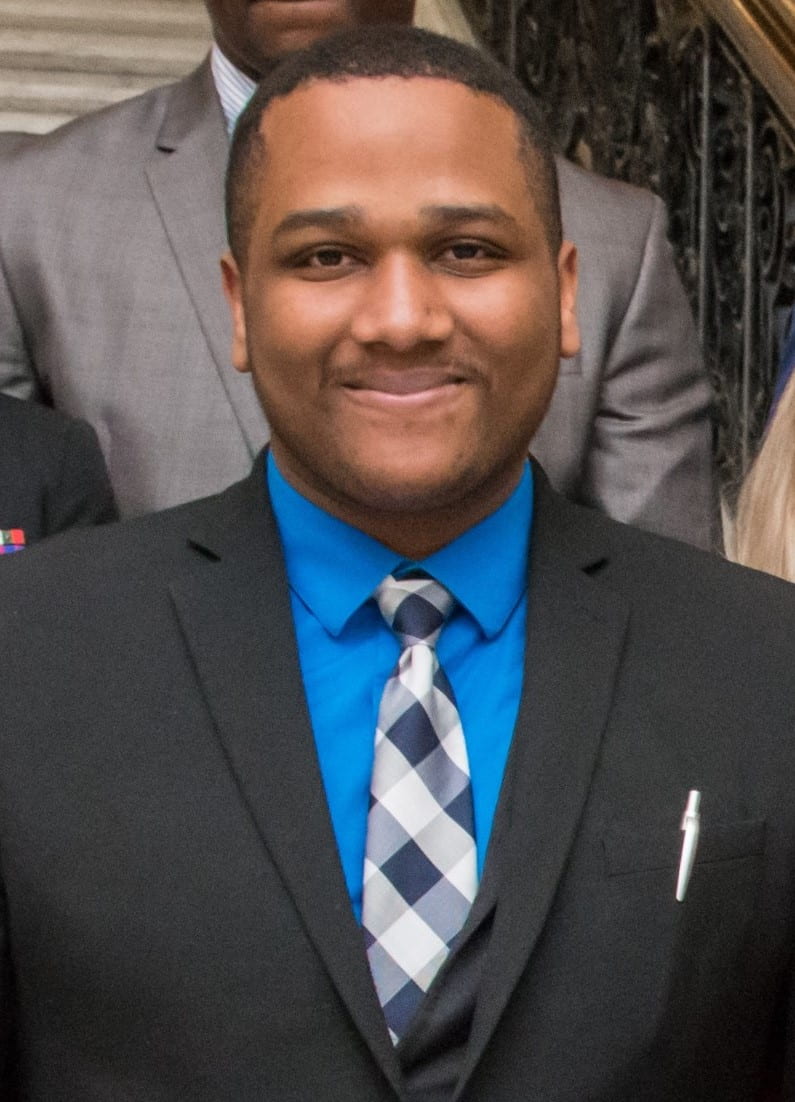This week we are spotlighting the impressive work of Josué Rivera, a 21-year-old student in the Master of Computer Science program. He graduated from UMass Dartmouth with a bachelor’s degree in computer science in 2019 after only three years of study. Rivera was born in the Dominican Republic and moved to Lawerence, Massachusetts when he was around twelve years old.
Rivera has always had a passion for engineering and learning about computers. He sees them as so much more than simply the technology we use for school and work. “The way I tend to describe computers to others is that it is a system that receives information (an input) from the outside world,” Rivera says. “This information can be colors, smells, simple things like keys from a keyboard, or complex things like different frequencies of electromagnetic waves. The system then analyzes the information through methods like the Turing machine (i.e. model computer), finite automatons, or other systems. In the end, this system creates new information (an output) which can be received by another system. This can be information on a screen or sound from a speaker. When one thinks of computers in this way, the world becomes much more fascinating. Because based on the definition that I gave, humans, animals, and other organisms could be considered computers; just much more complex.”
Rivera’s master thesis is titled: Graph Induced Lifelong Learning on Spatial and Temporal Data.
“I am developing a pair of novel neural network models that can learn new data and new labels over time. This model works by embedding a graph of data into a vector space in which the value in the vectors represents the similarity and difference between nodes in the graph. If 2 nodes belong to the same label their vector representations will contain similar values. If they are different, the vector representation will showcase their difference,” He says.
By learning the similarities and differences between the nodes, new data can be differentiated from known data. Once the new nodes are isolated, the model can be retrained to recognize and sort data that belongs to this new category. The model will learn more as more data is introduced to it.
Rivera explains, “The model accepts any spatial or temporal data but if we are discussing images of animals, for example, the model can first be trained to recognize images of dogs and cats. During this training, the model will also learn what makes them the same and different. Now, if now a new animal is introduced, let us say tigers. The model will serve as a mapping function that will embed the new images into the learned space.”
In Rivera’s example, new data will be identified and detected since the tiger will share some characteristics of both a cat and a dog. However, these features will not be identical. Thanks to the similarities and differences between the new and known data the model will recognize the tiger as something new that needs its own label. “Now that the new label is recognized, the tiger’s features compared to a dog and cat can be learned,” Rivera explains. “The mapping space of the model can be changed to more effectively recognize new labels later on. The results of this research could lead to the first truly general-purpose AI down the line.”
The rapid evolution of technology is part of what makes Rivera’s work so important and exciting.
“I am the proudest of the possibilities that this research can bring to change our world for the better,” Rivera says. “For example, one of the challenges with AI in medical tasks is the inability to adapt to never seen before cases. This research could be a huge help in developing solutions to treat unconventional diseases by learning what is similar between known issues and new ones. “AI is changing rapidly. We are arguably in one of the most important times in history for the development of machine learning and artificial intelligence. It is important we decide now what to do with this soon to be found power. Think about what has happened between 2000 and 2020. The leap has been enormous. Like most things in technology, it will only keep going up exponentially.”
Rivera is set to graduate this fall. He plans to apply for a Ph.D. program in either Electrical Engineering and Computer Science or Aeronautics and Astronautics.
“I hope to keep working on models and developing solutions to solve many challenging tasks,” Rivera says. “If I decide to go for AeroAstro, I hope to develop the model for safe use in space. This model could allow systems inside a rocket to know how to handle situations that have never been seen before. On the other hand, if I go for EECS, I hope to develop the model further to increase its accuracy and the reliability of the system.”
When Josué isn’t working on his thesis he spends his free time playing billiards, ping pong, tennis, or golf. He is also a big fan of anime and enjoys learning about Japanese language, art, and culture.
Follow Josué on social media or learn more about his work below
Josuenrivera.site
Github: JosueCom
Twitter: josuecom_
Instagram: josuecom_
https://www.umassd.edu/engineering/features/josue-rivera-19.html https://compact.org/newman-civic-fellow/josue-rivera-valdez/ https://www.mass.edu/system/29ws_winners2019.asp
https://www.facebook.com/southcoast

